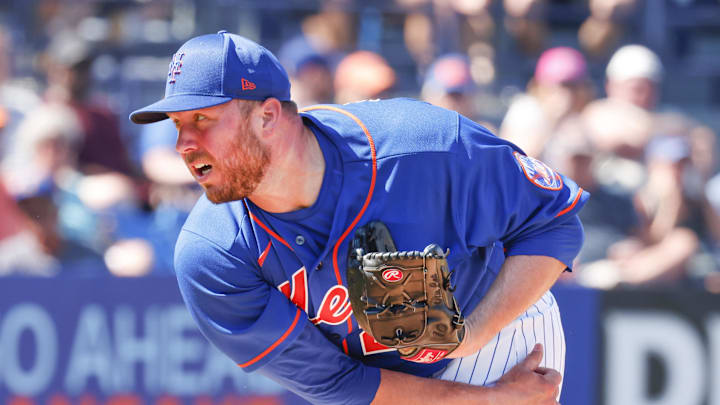Absence from the 40-man roster won’t have a negative effect on these three New York Mets pitchers. The odds are stacked against them making it there by the start of the year. At some point, things should change.
There are a couple of Spring Training battles going on for the three open bullpen spots. Only the pitchers currently on the 40-man roster are serious options. The non-roster invitees are there to make an impression for future consideration.
For one reason or another, these three Mets pitchers are not serious candidates to be on the 40-man roster by Opening Day. On a positive note, they should get there eventually and actually contribute in the big leagues.
1) NY Mets reliever Tommy Hunter is bound to see MLB action again this season
Selecting Tommy Hunter for the 40-man roster to start the season is a bad idea. Until the Mets are actually ready to call him up to the big leagues, he should stay in the minors. Keeping the 40-man roster open for other players is important. The Mets could be faced with lengthy or temporary injuries that will require a move. For instance, if the team needed to call up catcher Michael Perez due to a non-IL injury, they’d need to DFA a reliever in order to clear a spot for him.
Hunter re-signed with the Mets this offseason on a minor league deal. The benefit is something that immediately goes to waste for the ball club if they promote him prematurely. His lack of minor league options is also problematic. When the Mets do promote Hunter to the big league roster, they need to be sure he has a chance to stick around for a good stretch of time.
The situation was similar last year with Hunter making his MLB debut on June 19. He stuck around through the beginning of August until an injury sent him to the IL. When he returned to the mound on August 30, rosters were about to expand by two. Those extra spots allowed the Mets to safely add Hunter back while having enough optional relievers in case they ever needed someone else instead.
A similar plan should be in store for Hunter this year. Whether it’s June again or later, he’s someone the team should wait to promote. The moment they do lose one of the righties without options for a long period of time would be the moment to not hesitate.
